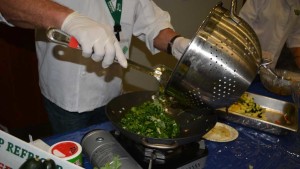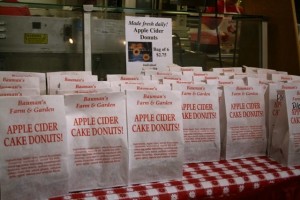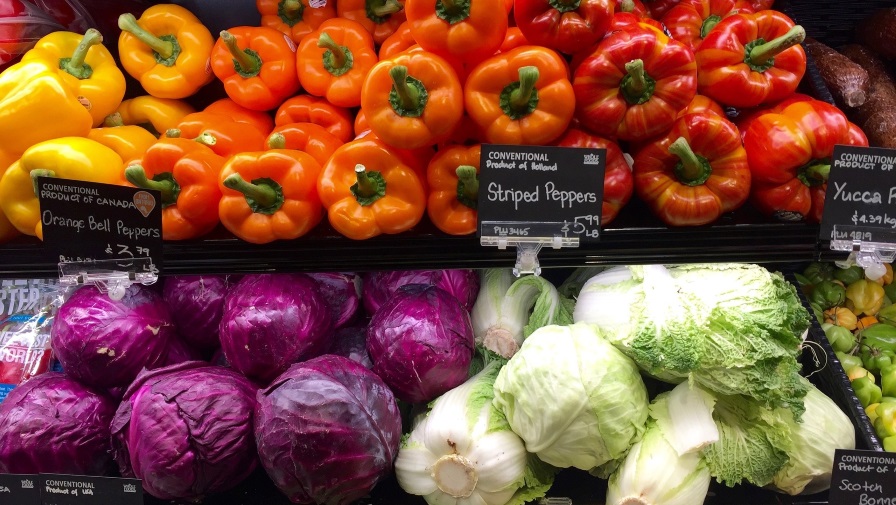7 Food Trends on the Front Burner for 2018
Our appetite directly influences what and how farmers grow and market their product. But hunger pangs come and go. In the same vain, so do food trends. Scanning the current culinary scene, several UF/IFAS food system experts took a stab at what’s coming to the table in 2018. Here are some of their predictions.

Photo by Paul Rusnak
Locally Grown
The demand for locally produced food continues to increase. Liz Felter, a UF/IFAS Regional Specialized Agent for food systems and ornamental horticulture, says the appeal makes sense beyond convenience and loyalty. “Locally grown food is more nutritious because it has less distance to travel to get to the consumer,” she says. “Purchasing local food helps support local growers. Some small-farm operations have added micro-greens and basil to their crop offerings because demand has increased and these crops get higher prices.”
 Flare for Artisan Fare
Flare for Artisan Fare
Along with locally grown foods, artisan foods are piquing consumers’ interest, according to Soo Ahn, an Assistant Professor of food science and human nutrition at UF/IFAS. Artisan food implies that the product is hand-crafted in smaller batches, commonly with high-quality ingredients. Typicalartisan food items include cheese, ice cream, and baked goods. The popularity of artisan foods will provide great opportunities for small food businesses, Ahn predicts. Artisan foods manufactured by small food businesses and their marketing strategies also attract millennials, a key demographic of the food industry.

Photo courtesy of the Entomological Society of America
Bring on the Bugs
Insects are trending as a food source and are now being termed “micro-livestock,” contends Rebecca Baldwin, a UF/IFAS Associate Professor of entomology. In fact, a chef who advocates for edible insects has attracted the attention of the Entomological Society of America and will speak to the group this month in Denver. On a related note, the Florida Museum of Natural History in Gainesville also has sponsored a Science Café about sustainability, and the chef prepared mealworms in a wine reduction as a salad topper. That night, more than 60 patrons tried insects, Baldwin points out.
 Backyard Chickens
Backyard Chickens
Farm fresh eggs from the convenience of your own back yard is a thought that make many salivate. Small poultry flocks have been a growing trend for a few years, says Mike Davis, Director of UF/IFAS Extension in Baker County.
Many municipalities offer homeowners in residentially zoned areas the chance to raise small flocks of chickens for egg production. The rules and regulations vary from city to city.

Photo by Frank Giles
Foodies on a Budget
“Foodies” are well in tuned with how their food is prepared and where it comes from. The best advice for foodies on a tight budget is to eat at home, advises Brandon McFadden, a UF/IFAS Assistant Professor of food and resource economics. While this may not be the advice some foodies want to hear, preparing food at home allows you to think about food from the perspective of a chef and provides a richer experience when eating out, he says.
 Home Food Entrepreneurs
Home Food Entrepreneurs
Cottage food laws have expanded recently in the state of Florida, according to Samara Deary, a Family and Consumer Sciences Agent at UF/IFAS Extension in Bradford County. Home food entrepreneurs can now use websites to market their products, and their earning potential has grown from $15,000 to $50,000 a year, before they would need to adhere to more stringent regulations, Deary says. “Some upcoming food trends include the resurgence of carbs as well as cook-it-yourself options,” he states. “Both offer a market for cottage food entrepreneurs to create food to meet the needs of those trends, not to mention the growing number of home bakeries that offer cakes, cupcakes, and other shelf-stable baked goods, I would say offers pretty stiff competition to your local bakery.”
 Cutting Waste
Cutting Waste
While Americans waste 130 million pounds of food each year, people will try to figure out how to reduce that amount. Among the possible solutions are consumer education and tax incentives for companies to donate to food banks, said Nan Jensen, a Family and Consumer Sciences Agent with UF/IFAS Extension in Pinellas County. Limiting organic waste that companies can dump in a landfill also helps, she said. Sometimes dates on food packages leave consumers confused and lead them to toss out food before its time. Making such labels more standardized would help, Jensen concludes.









